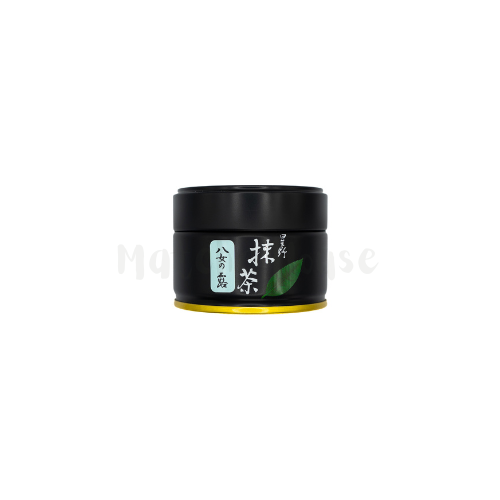A Beginner’s Guide to Japanese Matcha 日本抹茶指南
Matcha, the vibrant green powdered tea synonymous with Japanese tea culture, has captured the hearts of tea lovers worldwide. Known for its rich flavor, creamy texture, and numerous health benefits, matcha is not just a beverage; it’s a centuries-old tradition. This article will introduce you to the essence of Japanese matcha, its origins, the types of tea leaves used, preparation methods, and the differences between usucha (thin tea) and koicha (thick tea).
The Origin of Matcha
Matcha is deeply rooted in Japan’s tea-growing regions, each offering distinct characteristics due to unique climates and soil types.
- Uji, Kyoto: Often considered the birthplace of Japanese matcha, Uji boasts a legacy of producing some of the highest-quality matcha. The region’s misty climate and mineral-rich soil contribute to matcha’s signature umami flavor.
- Shizuoka: Known for diverse tea cultivation, Shizuoka produces matcha with a balance of sweetness and astringency.
- Nishio, Aichi: Famous for its vibrant green matcha, Nishio teas are creamy and smooth, perfect for ceremonial use.
The Tea Leaves Behind Matcha
Matcha comes from the Camellia sinensis plant, but not just any leaves are used. Only shade-grown leaves from plants cultivated specifically for matcha are suitable.
- Shading: The tea plants are shaded for 3-4 weeks before harvest, blocking up to 90% of sunlight. This process boosts chlorophyll levels, giving matcha its bright green color and rich umami flavor.
- Harvest: The youngest, most tender leaves are hand-picked, ensuring the best quality.
- Processing: The leaves are steamed to halt oxidation, then dried and de-stemmed to produce tencha. This tencha is stone-ground into the fine powder we know as matcha.
How to Prepare Matcha
Matcha preparation is an art. You’ll need a few tools: a matcha bowl (chawan), a bamboo whisk (chasen), and a sifter.
Steps to Make Usucha (Thin Tea)
- Sift the matcha: Use about 1-2 grams (1 teaspoon) of matcha powder to remove clumps for a smooth texture.
- Add water: Pour 70-80 mL of hot water (80°C/175°F) into the bowl.
- Whisk: Using the chasen, whisk in a zigzag motion until a frothy layer forms.
Steps to Make Koicha (Thick Tea)
- Use more matcha: For koicha, use about 4 grams (2 teaspoons) of matcha powder.
- Add less water: Add 30-50 mL of hot water to create a thick, paste-like consistency.
- Mix gently: Rather than whisking vigorously, mix with slow, deliberate strokes to avoid bubbles.
Usucha vs. Koicha: What’s the Difference?
-
Consistency:
- Usucha is light and frothy, with a thinner, tea-like consistency. It’s ideal for everyday enjoyment and pairs well with sweet treats.
- Koicha is rich and thick, almost like a concentrated matcha syrup.
-
Flavor:
- Usucha has a delicate, slightly bitter profile with a refreshing finish.
- Koicha delivers a deep, intense umami flavor, highlighting premium ceremonial-grade matcha.
-
Occasion:
- Usucha is more casual and versatile, while koicha is typically reserved for formal tea ceremonies.
Why Matcha Matters
Whether you enjoy usucha for its light froth or koicha for its bold flavor, matcha offers a unique way to connect with Japanese culture and tradition. Each sip reflects the care, craftsmanship, and history behind this remarkable tea.
Ready to experience authentic Japanese matcha? Start with ceremonial-grade matcha sourced from regions like Uji or Nishio to taste the true essence of this beloved tea.
日本抹茶指南
抹茶,這種鮮豔的綠色粉末茶,是日本茶文化的代表,也贏得了全世界茶愛好者的青睞。以其豐富的風味、奶油般的質地以及眾多的健康益處而聞名,抹茶不僅是一種飲品,更是一項擁有數百年歷史的傳統。本篇文章將帶您了解日本抹茶的起源、使用的茶葉種類、沖泡方法,以及薄茶(usucha)和濃茶(koicha)之間的區別。
抹茶的起源
抹茶深深紮根於日本的茶葉種植區,每個地區因獨特的氣候和土壤條件而呈現出不同的特性。
- 京都宇治:宇治被認為是日本抹茶的發源地,以生產高品質抹茶而聞名。該地區的霧氣氣候和富含礦物質的土壤賦予抹茶獨特的鮮味(umami)。
- 靜岡:靜岡以多樣化的茶葉種植而聞名,其抹茶在甜味與微澀感之間達到了良好的平衡。
- 愛知西尾:西尾因其顏色鮮豔的抹茶而著稱,其口感順滑且濃郁,非常適合用於茶道儀式。
抹茶背後的茶葉
抹茶來源於茶樹(Camellia sinensis),但並非所有茶葉都適合製作抹茶。只有特意為抹茶栽培的遮陰種植茶葉才可使用。
- 遮陰:茶樹在採摘前會遮陰3到4週,遮擋約90%的陽光。此過程會增加茶葉中的葉綠素含量,使抹茶呈現出鮮亮的綠色和濃郁的鮮味。
- 採摘:僅採摘最嫩、最優質的茶芽,以確保抹茶的高品質。
- 加工:茶葉經過蒸製以停止氧化,然後進行乾燥和去梗,製成碾茶(tencha)。碾茶被石磨碾成我們熟知的抹茶粉末。
抹茶的沖泡方法
抹茶的沖泡是一門藝術,需要一些基礎工具:抹茶碗(chawan)、竹製茶筅(chasen)和茶篩。
薄茶(Usucha)的沖泡方法
- 篩抹茶:取1-2克(約1茶匙)抹茶粉,用茶篩去除結塊,使質地更細膩。
- 加水:倒入70-80毫升80°C(175°F)的熱水。
- 攪拌:用茶筅以“W”字形快速攪拌,直到表面出現細膩的泡沫。
濃茶(Koicha)的沖泡方法
- 使用更多抹茶:濃茶需使用約4克(2茶匙)抹茶粉。
- 減少水量:僅添加30-50毫升熱水,形成濃稠的糊狀。
- 輕柔攪拌:不像薄茶那樣快速攪拌,濃茶需以緩慢且均勻的手法攪拌,避免產生氣泡。
薄茶與濃茶的區別
-
質地:
- 薄茶質地輕盈,泡沫豐富,類似普通茶湯,非常適合日常飲用,亦可搭配甜點享用。
- 濃茶則稠厚如漿,口感更加濃郁。
-
風味:
- 薄茶口感清爽,略帶苦味,後味回甘。
- 濃茶的味道更深沉濃郁,鮮味突出,適合用於高端的儀式級抹茶。
-
場合:
- 薄茶更適合日常和隨意場合,而濃茶通常用於正式的茶道儀式。
抹茶的意義
無論是享受輕盈的薄茶,還是品味濃郁的濃茶,抹茶都為人們提供了一個深入了解日本文化與傳統的方式。每一口都體現了背後細緻的工藝、匠心與悠久的歷史。
準備好體驗正宗的日本抹茶了嗎?從宇治或西尾等地區採購的儀式級抹茶開始,感受這種非凡茶飲的真正魅力吧!
